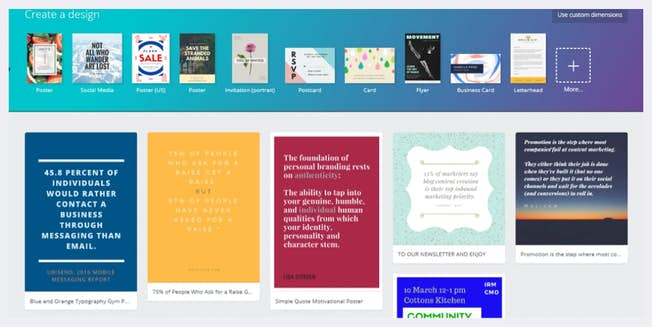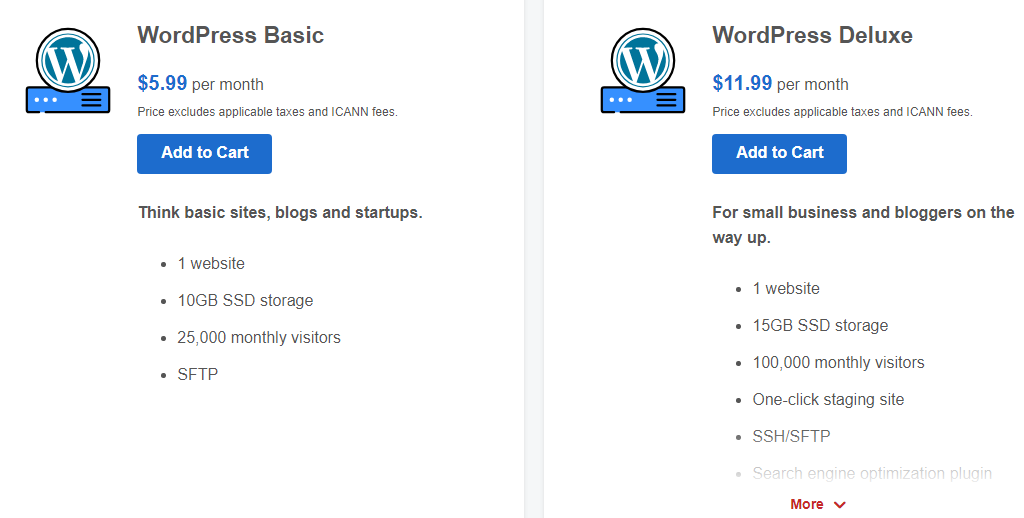
You have decided to build your own digital marketing strategy. What's next? You'll find out in this article how to go about the process. This includes choosing your channel, researching your audience, and then the final step. This article will teach you how create a customer experience and split test your strategies. This will help you determine if your strategy is working well for your brand. You're not the only one who isn't satisfied with your new strategy. Many businesses have been asking the same question. "How can I create a digital strategy for marketing?"
Researching your audience
When creating a digital strategy for marketing, it is important to understand your audience. Quantitative research involves analyzing large numbers and creating statistical results. If you are looking to create an email campaign that targets a particular audience, for example, you will need to identify their pain points and interests. Similarly, you can look at their purchase history to determine their purchasing behavior. Then, you can target your marketing message to the specific audience segments.
A successful digital marketing strategy requires you to get to know your audience. You will not be able understand their wants and needs if you don't conduct research. Research can help identify those needs and tailor content to them. Research will also help you predict their needs so that your marketing is more effective. Here are some tips for researching your audience:
Interviews: Surveys can help you better understand your audience. You can ask existing customers via email, publish customer reviews on social media, and conduct interviews. These surveys will provide valuable insights into the personality of your audience. Then you can develop your digital strategy. Not only is it important to research your audience but also to create a compelling marketing campaign. This will help you engage your audience, and increase sales.
Segmentation - By understanding your audience's lifestyle, interests and preferences, you can tailor the messaging to them. Segmentation allows you to communicate more effectively with your target audience and make it easier for them to engage in meaningful ways. For example, Adidas sent a gender-specific email, while the clothing brand categorized its audience by gender. A survey asking customers to rate the retailer would give an average score of 8/10.
Channel selection
Your product or service promotion will be enhanced by digital marketing channels. Your choice should depend on your primary objectives, target audience, competition and budget. Different channels can produce different results so make sure you choose the right channel for you. Which channels you use will affect the content and format of the ads you share with your target audience. Although content marketing remains the king of marketing, and will remain relevant, it is essential to reach your audience.

The goals of the business will dictate which channel you choose to use. Set your short-term and long-term goals. The long-term goal may be to increase revenue 20% over the next 2 years. A short-term goal may be to generate 400 sales qualified lead within 6 months or to increase website traffic 70% in 8 months. Make sure to identify the short-term and long-term goals of your business so that you can determine which channels will work best for you.
Be sure to evaluate the effectiveness of each channel before making a decision on which channels you will use. Each channel has its strengths, weaknesses, freedoms, and limitations. Consider the cost of each channel's creative content and what type you will need. Be sure to allocate all the budget you have before you consider using other channels for your digital marketing strategy. Facebook and Twitter are great options for creating buzz.
Create a customer journey
A customer journey plan is one of the key elements to a successful digital marketing campaign. These maps outline the customer's journey from decision to action. The customer experience map can be used in many ways. It can show the customer's journey through the sales funnel, up to the point where they become a loyal customer. A customer journey map can help you identify areas where you can make improvements.
A customer journey map is essentially a prospect's journey to purchase. It allows marketers to identify the questions that prospects ask and the difficulties they face along the journey. The higher-funnel phases are for creating awareness and generating interest. The last stages are for building brand loyalty. The first step in this process is to create awareness. This can be achieved through word of mouth, social media, search engine suggestions and blogs.
After researching and learning about a brand, potential customers begin the information-gathering phase of the customer journey. They may not be familiar with you at first, but they have an idea of what they want. This phase of the Customer Journey should include content that assists customers in making informed decisions. Customers can request a trial period for free to help them overcome any remaining hurdles in the buying process.
Marketing professionals can create a customer journey map that will allow them to target their ads by understanding what steps customers take in order to purchase a product or service. Each stage in the customer journey needs to have its own buyer persona. Marketers can tailor their marketing campaigns according to the goals of each stage by identifying these. A customer journey map is a tool that marketers can use to better understand their target audience. It identifies what motivates each customer's decisionmaking stage.
Split testing your strategy
You can improve your business profitability by using split testing in several aspects of your digital marketing strategy. These areas include page copy, headlines, buttons text, images and social sharing buttons. Email marketing is also a good option. Here are some examples of scenarios you can test. Split testing is useful to determine which marketing tactics will result in increased sales and profit. Make sure to use the correct sample size. Split testing should always be done with the appropriate confidence rating.
Split testing helps you identify which marketing strategies are performing well and where you need to make improvements to maximize their effectiveness. Split testing allows you to track whether your online marketing strategies are generating leads or bringing in returns. Split testing can be used to experiment with different versions of a site or particular elements. Split testing allows you to see if the website is earning money. Once you've identified which variants generate more leads, it is possible to make adjustments in your digital marketing strategy.

ClickFunnels offers a library that allows you 6 different versions to test one advertisement. It can help you get ideas for split testing. Facebook is another good place to look for split testing ideas. Facebook has many examples of ads that you can copy to find out which ones perform best. Landing pages are also ideal locations to test split tests. For example, moving your CTA below the fold increased conversions by 304%, while removing it from the landing page caused cart abandonment rates to decrease by 33%.
Split testing is an essential component of conversion optimization. It involves dividing traffic into two groups - the control group and the variant. Split testing allows traffic to be split so that half of the traffic sees the control version and half the variant version. Multivariate testing involves dividing traffic into equal segments. Each segment is then shown one variant of the variant. Split testing is a great way to improve your digital marketing strategy.
Measuring the success
Measurement is an important step in any digital marketing strategy. There are many ways to do this, including tracking the number and quality of conversions. Other metrics can be used to measure the effectiveness of a campaign, such as the number of pages viewed. These metrics can be used for determining the success of a campaign based upon its target audience as well as the effectiveness a specific marketing strategy.
To evaluate the success your digital marketing campaigns, you must track key performance indicator (KPIs) to gauge its success. KPIs can be quantifiable metrics that measure how your marketing team does against a particular goal. These goals can be either high or low level. These KPIs provide an indicator of the success of a campaign and can be used to guide future campaigns.
It is also important to establish goals that will help you measure your digital marketing strategy. For example, how many visitors did your website generate? Do you encourage purchases? Are you generating more sales through your email campaigns? Are you getting new business? How many people opened an email and made a purchase? These are just a few examples of what you need to track to determine whether your digital marketing strategy is working. It all comes down to your objectives, your goals, as well as the digital marketing strategy.
FAQ
What Are Some Common Mistakes Made by SEO Users?
SEO is one of the biggest mistakes people make. SEO is not a quick process. It is important to do the hard work to ensure that your website is optimized correctly. Black hat SEO techniques are another common error. Black hat tactics can damage your rankings as well as help them.
Should I Hire an Agency Or Do it On My Own?
An agency is a great way to get started. First, you can get everything you need from an agency. Second, many agencies provide training so that clients know what to expect when they hire them. They are capable of handling all tasks that will help you rank your website higher.
How do you create an SEO strategy?
Understanding your goals and how you plan to achieve them is the first step in developing an SEO strategy. This allows you structure your content to meet these goals.
The second step is to begin working with keywords. Doing keyword research can give you insights into what people are looking for by analyzing the terms they use. You can then write articles about those topics by using this information.
Once you've written your articles, ensure to include your target keywords throughout them. You should also optimize each article by including relevant images and videos. Lastly, link to other related pages wherever possible.
After you have completed all of the content on your site, it is time to optimize that content!
How much does SEO cost?
SEO costs will vary depending on the size of your company, industry and budget. A few hundred dollars may suffice for smaller companies, while large companies will need thousands. You can use our SEO calculator to get an estimate of the cost.
What is an SEO strategy?
Content is the most important aspect of any website. If you don't have relevant and useful information on your site, you won't rank high enough for searches.
SEO campaigns improve your website through the acquisition of links from other websites that point to it. It includes social media optimization. This involves using Twitter and Facebook to increase brand awareness and drive more traffic.
These will bring more users to your website and improve rankings. SEO campaigns are focused on building quality links back from your site to ensure that Google recognizes your website as valuable.
How often should my website be updated?
Your site's ranking can be improved by updating regularly. But it is not always necessary. It's not necessary to constantly update content that you already have created.
What is On Page SEO?
On-page SEO is the process of improving your website's ranking in search engines. Things such as site architecture, page titles, meta tags, and image alt text are all part of on-page SEO. Off-page search refers only to activities that do not directly impact your website's ranking. These include backlinks.
Statistics
- Sean isn't alone… Blogger James Pearson recently axed hundreds of blog posts from his site… and his organic traffic increased by 30%: (backlinko.com)
- Which led to a 70.43% boost in search engine traffic compared to the old version of the post: (backlinko.com)
- 93%of online experiences today begin on search engines. (marketinginsidergroup.com)
- If two people in 10 clicks go to your site as a result, that is a 20% CTR. (semrush.com)
- A 62.60% organic traffic boost to that page: (backlinko.com)
External Links
How To
How do you know when your SEO is working?
There are many ways you can tell if your SEO efforts are successful.
-
Your bounce rate should never exceed 30%. This means that users will abandon your page without clicking any other link. If your bounce rate is high, it means that your audience is not trusting your brand and/or isn't interested what you have to offer.
-
Your site visitors visit many pages - this indicates that they are engaged with it and finding information useful.
-
Your conversion rate is increasing - your target audience is more aware of your product/service and wants to purchase it.
-
Your site's average time is increasing. This means that people spend more time looking at your content.
-
This is a good sign that you are doing great SEO.
-
You're getting more shares on social media - this shows that your content is being shared by others and reaching audiences outside your follower base.
-
This is an indication that people are responding positively towards your work by leaving more comments in forums.
-
You get more engagement on your website, with more likes, tweets and shares.
-
Your rank in SERPs is rising, a sign that your hard work is paying off.
-
Your website is receiving more leads. This means people are finding you organically and are contacting your website.
-
Your sales are rising - this is a sign that people who found your website while searching for your services and products are buying them.
-
Your blog post receives more views/comments which indicates that people find your content informative and useful.
-
Your email list will have more subscribers - this means that people trust your business enough to subscribe to your updates.
-
Sales are rising, which means that people love you and your products to the point that they will pay for them.
-
You've got more followers on social networks, showing that your fans share your content and engage with your brand.
-
You are receiving more PR mentions, which means journalists are talking about you online. This boosts your image and raises awareness for your company.
-
This means that your brand is being recommended more often.
-
Your website is popular because people keep coming back to it. This indicates that customers are happy and will continue to come back for your services.
-
Your competitors are losing ground. This is because they didn't spend as much on their SEO campaigns, which makes them look bad.
-
Your brand image is changing. This indicates that your brand popularity is growing among a new customer base.